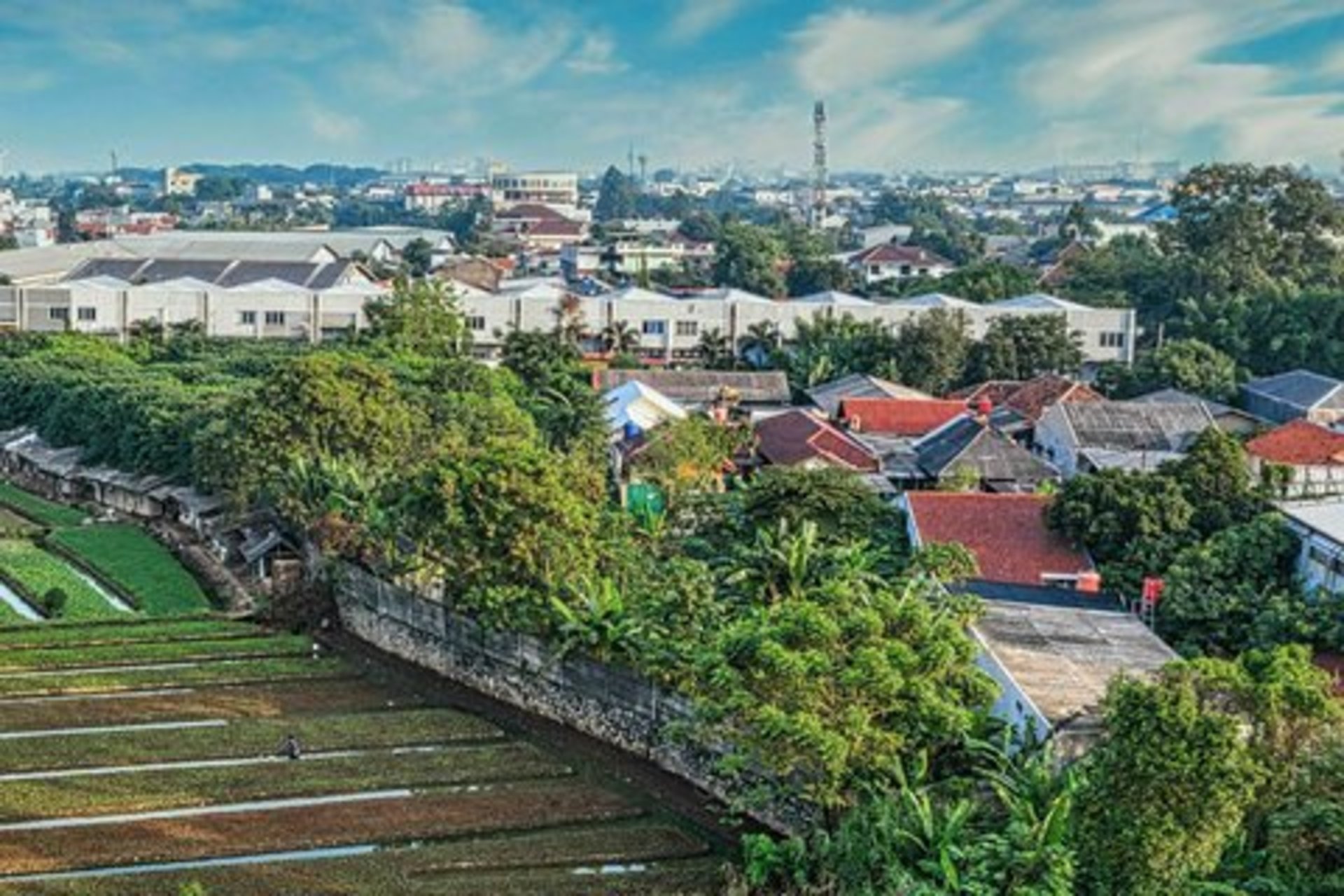Cascading Disasters in an Era of Climate Disruption
Stanford Woods Institute for the Environment
Recent major winter storms across Texas and the Gulf States led to devastating human and economic impacts. The storms resulted in a series of unimaginable and cascading events that began with unseasonably cold temperatures and snowfall. Within days, the storms had disrupted major infrastructure systems including electricity, gas, water, and food supplies and caused significant water and other damages to businesses and residences. Similar to the pandemic, the severity of these impacts also highlighted stark differences between communities and locations.
The Stanford Woods Institute for the Environment convened an online conversation that addressed the causes and consequences of this cascade of failures. A distinguished group of scholars and activists with expertise in environmental justice, adaptation planning, grid engineering, and climate and energy policy discussed a range of topics including the relevance for infrastructure and disaster risk reduction in the future; who pays and manages costs; adaptation and resiliency planning; and lessons about interactions with inequality and racism. Key takeaways from this conversation include:
Infrastructure and Disaster Risk Reduction
Infrastructure planning should be integrated, interconnected, holistic, cost-effective and forward- thinking. Critical bottlenecks in systems should be targeted as priorities and projections that are no longer relevant due to climate change effects should no longer be relied upon. Sarah Fletcher, assistant professor of Civil and Environmental Engineering at Stanford, provided an example of the 100-year flood maps no longer providing reliable guidance for future planning. Systems and grids will fail, however, planning for cascading interactions and modeling emergency scenarios (wildfires, hurricanes, earthquakes, etc.) from the bottom up would improve resilience and help lessen the shocks particularly in frontline communities. Redundancies are also critical components in any system and future capacity should be considered along with sufficient margins. According to Arun Majumdar, professor of Mechanical Engineering at Stanford and former director of the Advanced Research Projects Agency - Energy (ARPA-E) at the U.S. Department of Energy, the climate-induced weather extremes we will have but cannot predict will force us to think of measures that take into account the potential for cascading failures such as happened in Texas.
Increased Infrastructure Investment is Needed – Who Decides on its Design and How do we Pay?
Significant national infrastructure improvements have not been made in 50 years or more. We need new ideas and policies both to increase these types of investments as well as to determine better ways to pay for them. Markets cannot be the only mechanisms to manage or drive the grid, nor can it rely solely on engineering. Michael Wara, Director of the Climate and Energy Policy Program at Stanford, pointed out that Texas uses scarcity pricing for its market that assumes supply will appear to match rising demand. But recent cascading system failures meant that no additional energy could come online so prices remained at the maximum. Regulation may be required to prevent the types of ratepayer billing seen in Texas and to ensure there is fairness and balance for left-behind communities.
Making smart investments up front can help control costs, such as weatherizing pipelines, which is more cost-effective to do before they are built versus retrofitting according to Fletcher. Additional strategies, such as improving energy efficiency through state or national programs (like EnergyStar), would help residents to be more resilient to weather extremes and cut down on overall energy usage plus prevent surges according to Wara.
Instead of being driven by price alone, community needs must be included when designing critical infrastructure and overlaid with or even prioritized over any engineering requirements. Texas has a strong environmental justice community that must be at the table in planning according to Catherine Flowers, founder of the Center for Rural Enterprise and Environmental Justice (CREEJ). In the most vulnerable communities, systemic racism has often impacted policymaking through practices like redlining. The fossil fuel industry has also influenced decision making on power plant placements and services putting profit over people. Flowers further stressed that we must dismantle these failed paradigms. Climate change will affect all of us but historically marginalized communities will be hit hardest and have always suffered disproportionately from the public health impacts of pollution.
Mitigation is only one factor when considering climate change solutions and as much importance needs to be placed on strategies to increase adaptation and resiliency. Helping communities weatherize/harden their homes or infrastructure, for example, or purchase flood insurance or even install green infrastructure may be more useful and cost-effective long-term with benefits gained before disasters strike. Bottom-up, community-based solutions need to also be part of any infrastructure resilience evaluation. Equity and justice and jobs as well as climate extremes must be included across the board in all adaptation and mitigation strategies.
Your Questions Answered
The researchers answered individual questions to help the public better understand the risks and impacts of cascaiding failures related to extreme weather events.
Why are there very high electricity prices that were mentioned in the news?
Consumers have choices based upon their choice of residential electricity provider and rate plan. They don’t have any control over who gets power in a load shedding context (when the power company needs to stop supplying electricity to some customers to keep the system from failing).
Under this price mechanism are consumers not able to specify a maximum price they are willing to pay? And if there is a shortage to the extent that price hits $9000/MWh, who gets the power (and the high bill), and who does not?
In general, the answers to both of your questions are no. The plans you read about (the ones with the $10,000+ bills) don't allow a customer to set a maximum willingness to pay or allow for the choice of declining service during times of very high prices.
California has been doing a big push of electrification and many homes do not have other means for heat. What should we learn about grid redundancy not to put people's lives at risk?
The blackouts in Texas do raise important questions about all electric homes. But they also raise them for most modern gas heated homes. Modern gas furnaces cannot run without electricity. Same goes for gas ovens and many gas hot water heaters. So, the big question is how to create a context where customers are resilient during these kinds of weather emergencies. And there are no easy answers.
Given that the Texas grid was very close to total collapse, what would have happened had a total collapse of the grid occurred? Would it have been a much longer process in getting the grid working again--like a matter of weeks or a month?
The Texas grid came close to a total collapse. That would have occurred had frequency on the grid fallen much below 59.3 Hertz (60 is normal). In a few minutes at that level, power plants (including especially several nuclear power plants) would have disconnected in order to protect their systems. This would have caused further declines in frequency, and do further fragmentation of the system. Recovering from that event is called a "black start" and although grid operators plan for it, it's not something that anyone does with any frequency. Experts differ on how long it would actually take but there's no doubt that a Texas wide blackout of even longer duration would have occurred - perhaps extending beyond one week.
Do you think conventional urban water systems are a sustainable method under climate change for resilience urbanization and, energy and water security? Which new method should be used?
Urban water systems need to adapt and diversify in order be resilient to changes in the natural and built environment and the evolving needs of water systems. We know now that the conventional approach of building more and more infrastructure to meet growing demand under potentially dwindling supply is often not sustainable. Instead, focusing on improving efficiency, using natural solutions like green infrastructure, and making more targeted infrastructure investments as needed can water systems more robust for an uncertain future.
Is there any value to compare and contrast the country’s poor preparation and response to an epidemic with this energy failure? Is our culture a problem?
Yes. In the U.S., we seem to be allergic to investing in prevention, even though study after study shows that every dollar invested in prevention saves several (often 6 to 10) in response and recovery. This skepticism about investing in prevention appears in deferred maintenance of infrastructure, underinvestment in redundant systems, limited attention to public health, and even poor funding for disaster response (of course, you need more of the latter when you don’t invest in the former). My personal impression if that, culturally, the U.S. tends to take the position that risk reduction costs too much and that luck and pluck can get us through tough times. But the data show the opposite. Risk reduction saves money and lives.
How do we ensure this discussion can be used to make change and build resilience amongst communities like Texas, outside the coastal polities?
Great question. It is not clear that a community needs to believe in climate change in order to invest in risk reduction. Even if you think the deep freeze was entirely natural, it is still important to take steps to prevent it from occurring again. Whether or not you believe in climate change could, of course, affect the odds you place on the event happening again. But it is also important to remember that a more resilient electrical grid can improve reliability in response to a wide range of natural and human-caused shocks, from severe storms to major industrial accidents.
Knowing that lack of resiliency causes the failure of supply chains for electricity, is it possibly more important to worry about the impact of climate change on supply chains of food and water?
Of course, the deep freeze impacted the supply of both electricity and water. In terms of overall costs, it is likely that the damage to the water infrastructure and from the water damage will be at least as expensive as the damage from the loss of electricity. But the underlying message about the importance of investing in resilience applies to many sectors, including food, shelter, transportation, and communications. The challenges and the solutions are not the same for every sector, but the importance of resilience is consistent.
Explore More
-
Gabrielle Wong-Parodi and Jim Leape are leading an initiative to launch the planned Sustainable Societies Institute by the end of 2024.
-
Stanford economist Paul Milgrom won a Nobel Prize in part for his role in enabling today’s mobile world. Now he’s tackling a different 21st century challenge: water scarcity.




